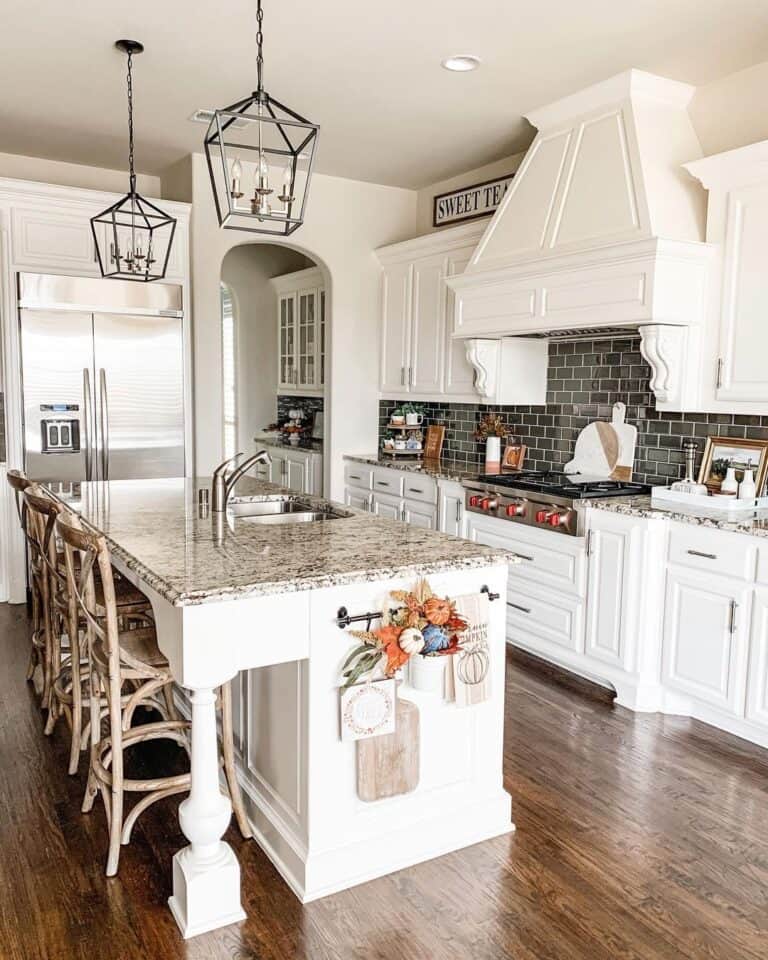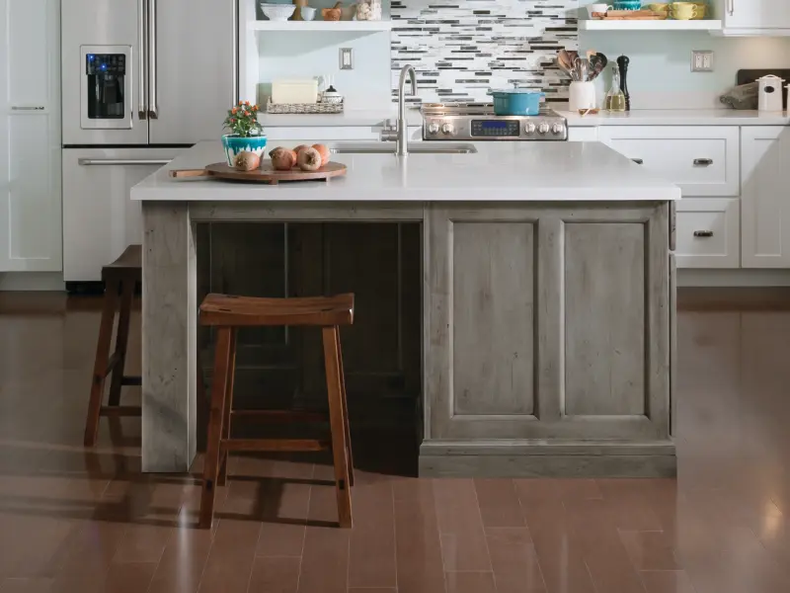Kitchen Island Legs: Boost Your Kitchen with Solid Support
An Overview to Picking the Perfect Kitchen Area Island for Your Home
Recognizing your kitchen's spatial characteristics is the preliminary action, ensuring that the island fits flawlessly without interfering with the circulation. The selection of materials and coatings also plays a crucial function in harmonizing the island with your cooking area's general layout.
Evaluating Your Room
Before choosing a kitchen area island, it is necessary to thoroughly evaluate your space to make sure the enhancement will be both practical and cosmetically pleasing. Begin by measuring the readily available location, consisting of the width, size, and height of the kitchen area. Precise dimensions are important to avoid acquiring an island that overwhelms the room or one that is disproportionately small.
Take into consideration the existing design and just how the island will certainly incorporate with the current web traffic flow. A well-placed island ought to not hamper or obstruct paths accessibility to important appliances, such as the sink, fridge, and stove. Leave adequate clearance area-- commonly around 36 to 48 inches on all sides-- to permit comfortable movement and work area efficiency.
Next, assess the all-natural light and sightlines within your kitchen area. An island that blocks a window or disrupts visual communication can make the space feel dark and cramped. Think of exactly how the island's positioning will affect illumination and exposure, guaranteeing it improves as opposed to diminishes the kitchen area's setting.
Figuring Out the Objective
Determining the function of your cooking area island is a vital action in ensuring it meets your details demands and preferences. Prior to diving right into layout or dimension factors to consider, it is vital to clarify what primary function the island will certainly serve in your kitchen. Will it be a main hub for meal preparation, a laid-back dining location, or potentially an added storage space solution?
Furthermore, enough counter area for chopping and mixing, along with obtainable storage for cooking area tools and components, can transform the island right into an efficient workstation. On the other hand, if the island is planned to promote social communications or offer as a dining location, seating plans end up being critical.

Selecting the Right Dimension
Picking the ideal dimension for your kitchen island is an equilibrium of performance and space optimization. A perfect kitchen area island need to offer enough work space while making certain that activity around the kitchen continues to be unimpeded. Begin by measuring your kitchen space; a minimal clearance of 36 to 42 inches around the island is necessary to allow for comfy movement and access.
The measurements of the island need to show its intended usage. If the island will certainly serve mainly as a prep area, a width of 24 to 36 inches may be enough.

Last but not least, ensure that the island's size complements the total kitchen area layout, staying clear of any kind of overwhelming existence that could interfere with the cooking area's visual and utility - kitchen island legs. Cautious planning and specific dimensions will assist you achieve a harmonious and find more reliable cooking area setting
Finding Products and Finishes
After identifying the appropriate dimension for your cooking area island, the next step involves picking ideal materials and finishes. The selection of materials substantially affects both the aesthetic charm and functionality of your kitchen island. Popular materials for countertops include granite, butcher, and quartz block, each offering distinctive benefits. Granite, understood for its resilience and classic sophistication, is extremely resistant to scratches and warmth. Quartz, a crafted rock, supplies a non-porous surface that stands up to discolorations and germs. Butcher block, check this site out made from hardwood, adds a cozy, rustic charm and is ideal for cooking.
In addition to the countertop, think about the materials for the island base. Solid wood uses a classic, durable appearance, while stainless steel provides a smooth, contemporary appearance and is easy to tidy. Painted surfaces can introduce a sprinkle of shade, with choices ranging from muted pastels to vibrant, vivid tones.
When choosing finishes, guarantee they match the total cooking area design. Matte finishes provide a contemporary feeling, while glossy finishes can produce a sleek, high-end appearance. Focus on the toughness of coatings, specifically in high-traffic locations, to keep the island's appearance in time. Picking the ideal products and coatings will certainly boost both the capability and visual charm of your kitchen island.
Incorporating Useful Functions
Including practical attributes into your kitchen island can substantially enhance its utility and ease, transforming it right into a functional focal point of your kitchen. One crucial function to consider is additional storage space. Integrating cabinets, drawers, and open shelving can offer much-needed room for pots and pans, utensils, and little appliances, helping to keep a clutter-free setting.
One more valuable addition is an integrated sink or cooktop, which can streamline meal prep work and clean-up go to website processes. A sink can assist in jobs such as washing vegetables and cleaning up dishes, while a cooktop can enable food preparation straight on the island, promoting an extra interactive and social cooking experience.
Take into consideration incorporating seating options, specifically if your kitchen area functions as an informal dining area. Bar feceses or built-in benches can change the island right into a multifunctional space for meals, homework, or informal events.
Finally, incorporating electric outlets into your kitchen area island can improve its usefulness. Electrical outlets provide hassle-free gain access to for little kitchen area devices, billing stations for electronic devices, and additional lighting choices.
Verdict

Before choosing a cooking area island, it is important to completely examine your area to guarantee the addition will be both practical and cosmetically pleasing.Picking the best dimension for your kitchen area island is an equilibrium of capability and space optimization. kitchen island legs. A suitable cooking area island must give ample work area while making sure that motion around the kitchen area stays unblocked.Incorporating functional features into your cooking area island can considerably improve its utility and benefit, transforming it right into a versatile centerpiece of your cooking area.In verdict, choosing the optimal cooking area island demands a complete evaluation of the available space, quality concerning its key function, and careful factor to consider of the proper size and materials